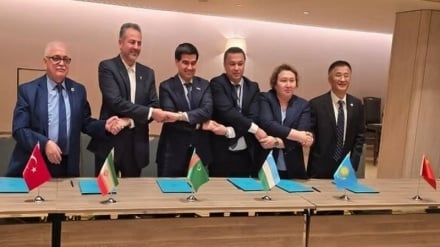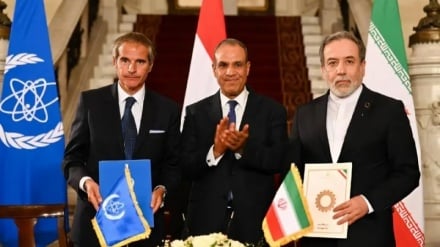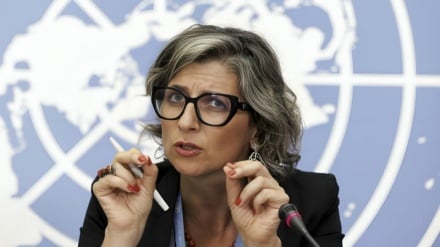Why is Europe still fueling the war in Yemen?
Despite attempts to ban arms exports, European countries remain important weapons suppliers to Saudi Arabia and the UAE, and thus accomplices in the war crimes against the people of Yemen.
Stay with us for an article by Romain Mielcarek the author of “Arms dealers: An investigation of a French business”, for ‘The Nation’ site, titled: “Why Is Europe Still Fueling the War in Yemen?”
Marseilles dockers from France’s CGT union this May inspected a shipment intended for the Bahri Tabuk, a Saudi cargo ship they suspected of intending to pick up munitions. A few days earlier another Saudi vessel, the Bahri Yanbu, had loaded Belgian-made arms in Antwerp, but a legal challenge by protesters deterred it from docking in Le Havre for French-made weapons. On May 20 and 21, Italian dockers union members in Genoa announced they would strike unless the Bahri Yanbu left the port; again it failed to load. All these dock workers protested in conjunction with a small group of NGO activists and politicians who have condemned the role of the Saudi-led coalition in the war in Yemen.
The current phase of that war began in 2014 when the popular Ansarallah Movement entered the capital, Sanaa. The Zaydi Shi’a Muslim movement had been fighting government forces since 2004 in view of the official policy of discrimination. In February 2015 the United Nations Security Council passed resolution 2201 calling for an end to hostilities. It repeated this several times, including after March 26, 2015, when the Saudi-led coalition that included the United Arab Emirates (UAE), Egypt, Sudan, and Morocco launched its first military invasion of Yemen – an invasion that has, unfortunately, not been categorically condemned by the UN.
The UN is also concerned about the growing number of Yemenis (24.1 million out of a population of 28.5 million) who needed help; for 14.3 million the need was urgent. By the end of 2018, the fighting had displaced 4.8 million, and according to NGOs, including the Armed Conflict Location & Event Data (ACLED) Project, which has created a large database, more than 90,000 people have died, 11,700 of them civilians. In February 2018 the UN called Yemen’s humanitarian crisis the worst in the world.
Many NGOs believe the Saudi-led coalition has little regard for civilian lives: A funeral was bombed in October 2016, killing 140; a wedding was bombed in April 2018, killing 30, 13 of them children; and a bus was hit in August 2018, killing 51, 40 of them children. Saudi Arabia calls these “unfortunate errors,” but a maritime blockade, allegedly imposed to prevent arms movements, has also stopped shipments of food, starving people and leaving little doubt as to the Saudis’ true intentions.
European organizations working on arms control—such as Amnesty International; Action, Sécurité, Ethique Républicaines (ASER); Action des Chrétiens pour l’Abolition de la Torture (ACAT); Campaign Against Arms Trade (CAAT); and Human Rights Watch—have highlighted that the United States and Europe are supplying arms. Saudi Arabia and the UAE regularly top the table of arms purchases from France, the United Kingdom, Germany, Spain, Italy, Bulgaria, and Sweden. Several NGOs have unilaterally initiated legal proceedings in national courts and the International Criminal Court, hoping to demonstrate the exporting country’s criminal responsibility, but the law remains hard to interpret.
In France, ASER’s case was dismissed by the administrative court this July. In the UK, the Court of Appeal in London found in favor of CAAT this June, stating that the government grant of export licenses for arms sales to Saudi Arabia was “wrong in law.” This judgement is non-binding and then–Secretary of State for International Trade Liam Fox sought permission to appeal against it. But it was a victory, nonetheless for CAAT.
The Arms Trade Treaty (ATT), which came into force in December 2014, and the EU Common Position on Arms Export Controls of 2008 require arms-producing countries not to export arms where there is a clear risk they will be used in breach of international humanitarian law. But NGOs and governments interpret “clear risk” differently. NGOs take any civilian deaths as proof, whereas governments class them as collateral damage but do not condemn the whole military operation. So far, NGOs have failed to move any court for war crimes or collusion by arms manufacturers, because of government pressures.
Most European governments had mildly criticized the carnage in Yemen, but it was the murder of Saudi journalist Jamal Khashoggi inside his country’s consulate in Istanbul in October 2018 that triggered political action. Austria, Denmark, Norway, the Netherlands, and Finland imposed an arms embargo; the Dutch and the Finns also gave up potentially lucrative contracts. There was, though, no concerted action with the market leaders.
In France, the publication of classified documents by the journalists’ collective Disclose on April 15 this year revealed politicians’ responsibility and earned the journalists a summons to appear before the General Directorate for Internal Security (DGSI) as part of an inquiry into a breach of national defense secrecy. The key leaked document was a confidential defense memorandum from the Directorate for Military Intelligence (DRM) to President Emmanuel Macron, Prime Minister Edouard Philippe, Armed Forces Minister Florence Parly and Foreign Minister Jean-Yves Le Drian. It listed major military equipment the Saudis and Emiratis had used and the positions of combat tanks (Leclerc, AMX-30, AMX-10P), armored vehicles (Aravis), warships (Baynunah-class corvettes, Al-Madinah and Al-Makkah-class frigates), artillery (AUF-1, LG1, Milan, RTF1), supply aircraft (A330 MRTT), helicopters (Cougar, Panther and Dauphin), fighter aircraft (Mirage 2000-9), and Damocles long-range laser designators for precision targeting.
According to the DRM, Caesar self-propelled howitzers made by French manufacturer Nexter put 436,370 Yemeni civilians within firing range of mercenary troops and Saudi armed forces in their advance into Yemeni territory. Despite the French government’s silence, Disclose journalists revealed that 35 civilians were killed in artillery bombardments that must have come from Caesars, as no Chinese or U.S. guns there had sufficient range. Unlike the Leclerc tanks and the Mirage 2000-9s, the Caesars are being delivered in phases between 2010 and 2024, so ignorance at the time of delivery is no excuse.
The military intelligence memo also mentions Italian-made Abu Dhabi-class corvettes, British Typhoon and Tornado fighters, German Al-Murjan mine hunters and Murayjib-class corvettes, and Swedish Ghannatha patrol boats and airborne radar systems.
Official export reports make no secret that arms sales have continued throughout the war. In 2017, EU countries granted licenses to export to Saudi Arabia worth €17bn and to the UAE worth €5bn, among them the UK (€1.572bn), Germany (€477m), and Belgium (€152m). Persian Gulf arms shipments earned Bulgaria €484m and Spain €174m in the same year. In its report of June 4, 2019, France stated it had supplied arms worth €1.398bn to the Saudis and €237m to the Emiratis in 2018. While big players in France, Germany and the UK supply the major systems, Saudi Arabia and the UAE are now looking to Eastern Europe for weapons. Saudi Arabia is Bulgaria’s biggest customer for light arms and munitions.
How are these sales justified? France’s armed forces ministry does not comment, but minister Florence Parly told parliamentarians on the national defense committee this May, “It’s vital to our sovereignty.”
Her position oscillates between bad faith and untruth. Despite the information from the DRM, she insisted on France Inter on January 20 this year, “I have no knowledge of [French] weapons being used directly in this conflict.” On May 7 (after the Disclose revelations), she told parliamentarians, “We have never claimed that no French weapons have been used in Yemen. But to date we have no proof that French-made weapons are used.” Yet the DRM memo explicitly states that various weapons, such as Baynunah corvettes, which are equipped with a sophisticated missile-launching system, are “participating in the naval blockade and supporting ground operations on the Yemeni coast’.
Ddeputy Fabien Gouttefarde, a former special legal adviser on armed conflict law at the defense ministry, tried to justify France’s arms sales, saying: “There’s a strategic partnership with Saudi Arabia and the United Arab Emirates.”
Faced with the reasons of state cited by European governments, parliaments have trouble accessing reliable information on arms exports. Though public reporting has become mandatory everywhere, its usefulness varies. Few French politicians willingly plow through the pages of tables they receive. In Italy, the reports are 1,400 pages of raw data. In the UK, several MPs examine the data and produce a counter-report that contains questions the government must answer. The debate in Germany is especially heated within the defense committee. A few countries, including the Netherlands, notify politicians every time an export license over €2m is granted to a country not on an approved list. Only in Sweden is a group of specialist parliamentarians consulted over every risky license before it is awarded. In the UK, CAAT spokesman Andrew Smith was delighted at the judgment in June, as the UK has temporarily stopped issuing new licenses to Saudi Arabia, though not supply and maintenance under existing contracts.
Despite much debate, no major exporting nation took a firm stand until October 22, 2018, when, following the murder of Khashoggi, German Chancellor Angela Merkel said, “As long as it’s not cleared up, there will be no arms exports to Saudi Arabia. I assure you of that very decidedly.”
This was a major shock to the European industry, especially France and the UK. As German companies supply components for a range of defense systems, the biggest arms manufacturers were effectively blocked from fulfilling contracts. Many tried to pressure the Germans behind the scenes, but Thomas Enders, executive president of Airbus (which is keen to supply 48 Eurofighter aircraft to the Saudis), said publicly on February 16, “It has been driving us crazy at Airbus for years that when there is even just a tiny German part involved in, for example, helicopters, the German side gives itself the right to…block the sale of a French helicopter.”
With the Eurofighter, there are few other contractors who can supply the software updates blocked by Berlin; alternative suppliers are often in the United States, and European manufacturers fear nothing more than relying on American goodwill. So France and the UK did all they could to persuade Germany to soften its stance. On March 29, 2019, the German government reduced its restriction to products entirely made in Germany. Components could once again be supplied, even if destined for problematic countries.
German manufacturers had already found ways around the embargo. Rheinmetall continued its munitions shipments via Italian and South African subsidiaries. Industry giants are setting up local facilities in Saudi Arabia and the UAE. Both countries have in recent months announced new joint ventures and plants in partnership with European groups, including Thales, Naval Group, Leonardo, CMI, Navantia, Airbus, and MBDA. The aim is to be able to build and maintain equipment locally, meaning governments and parliaments in partner countries will have less say.
No industry figure was willing to speak officially, but a French executive said off the record, “Saudi Arabia is the world’s second-largest arms importer. So every seller is there.”
AS/SS


